QuickGrocery Get Support 24/7
Dashboard
Dashboard is your control tower, giving you a real-time overview of your entire Grocery Delivery Business.
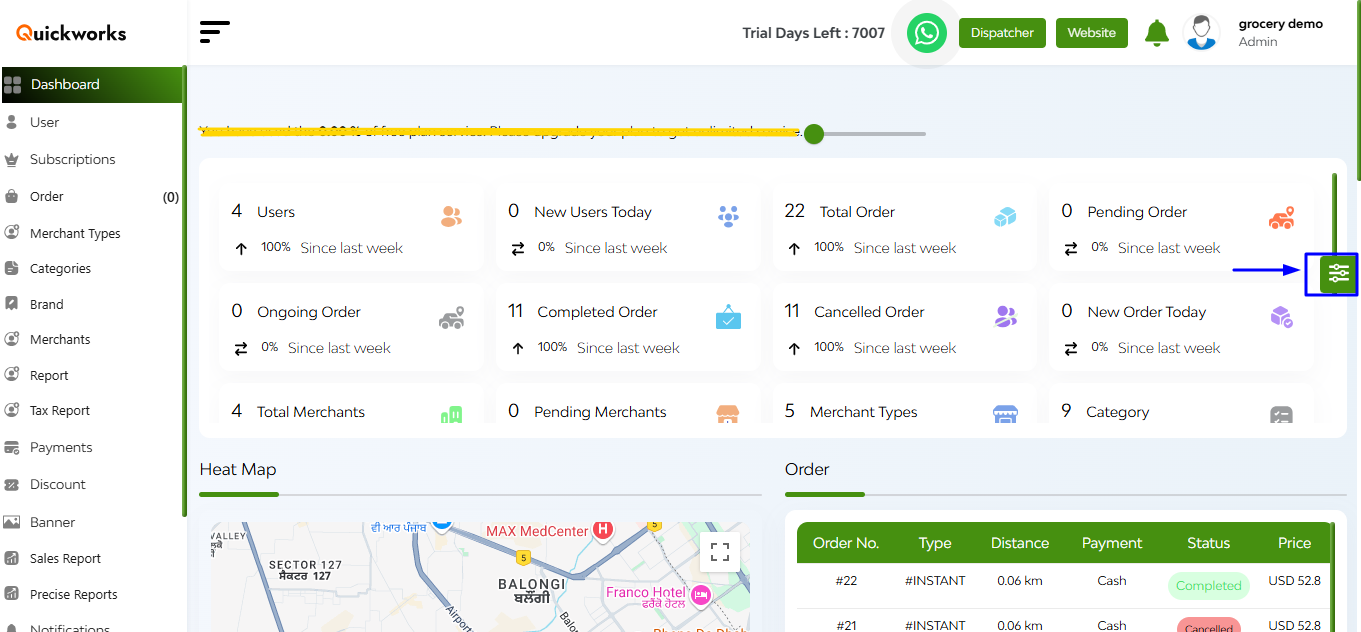
Upon successful login, the admin is presented with this dynamic admin dashboard.
On the left side of the dashboard, there is a Navigation Sidebar that provides easy access to various features and modules within the platform.
On the right side of the dashboard, there is a Theme Customization Widget where you can toggle between light and dark modes and customize the color scheme of the sidebar and top bar.
At the centre of the dashboard has Interactive Feature Cards that display
- User
- New Users
- Total Orders
- Pending Order
- Ongoing Order
- Completed Order
- Cancelled Order
- New Order Today
- Total Merchants
- Pending Merchants
- Merchant Types
- Category
- Subcategory
- Brand
- Product
- Deals
- Coupons
- New Reviews Today
Clicking on a card navigated to detailed information about that metric
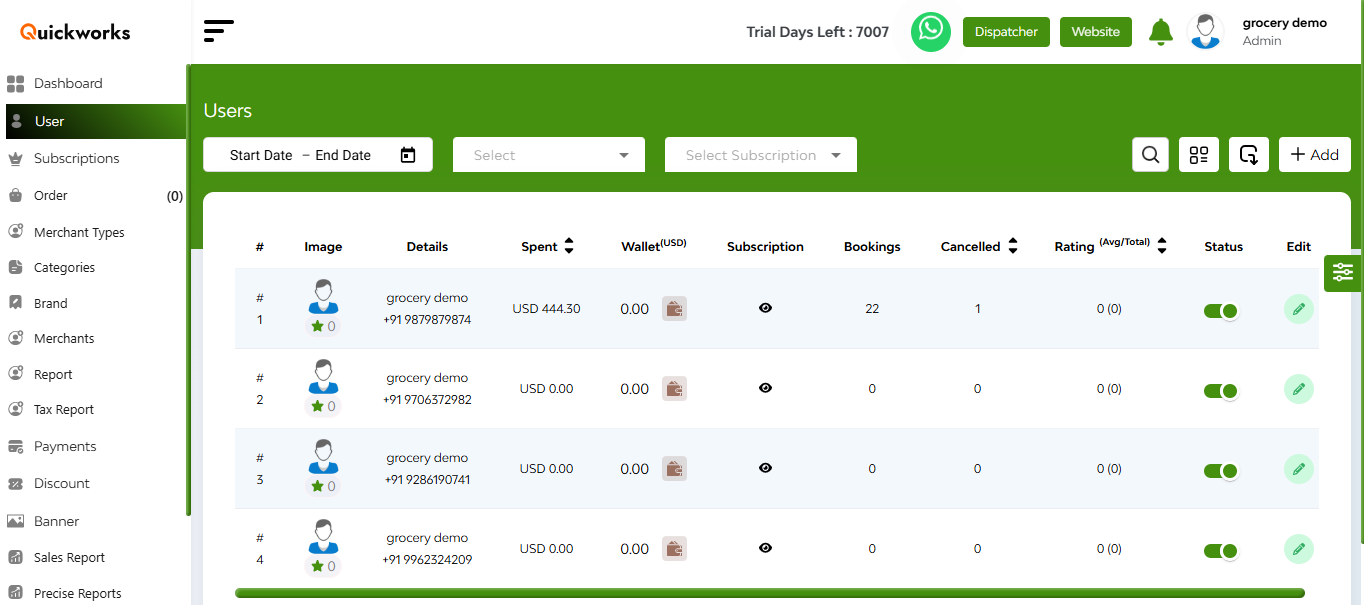
Also there is a Heat Map and Order Section i.e. a visual representation of booking hotspots.
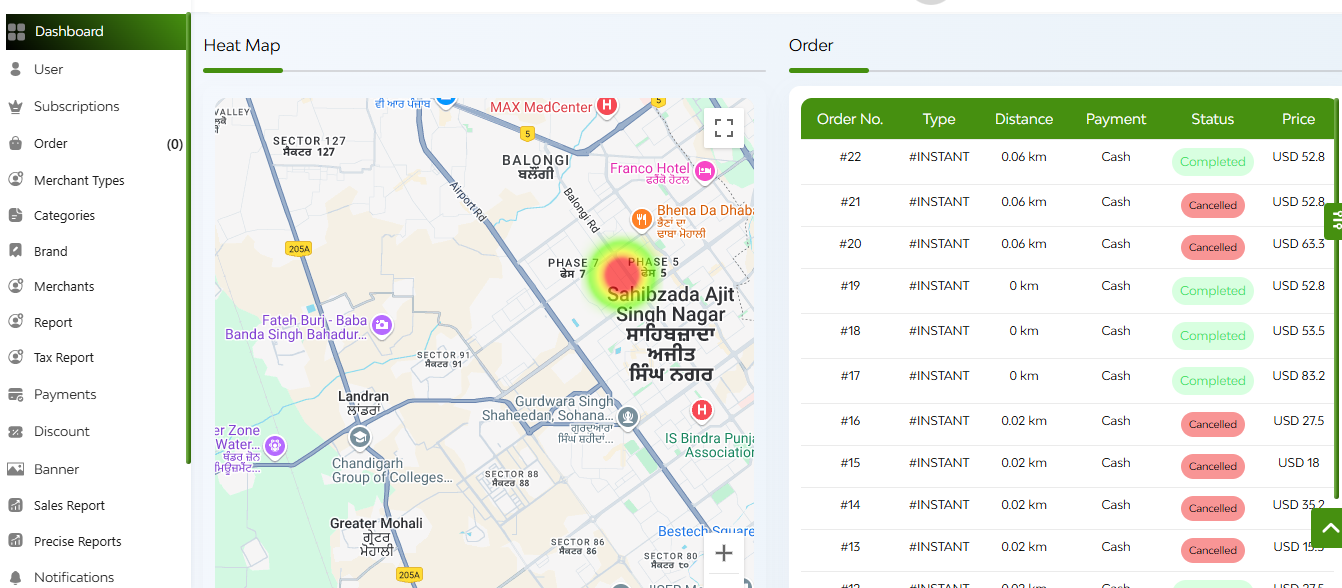
- Highlights areas with high user activity
- Indicates regions with the majority of bookings each month.
- Quick view of orders on the basis of order number, type, distance, payment, status, price.
Below that you can see a pie chart and a bar graph
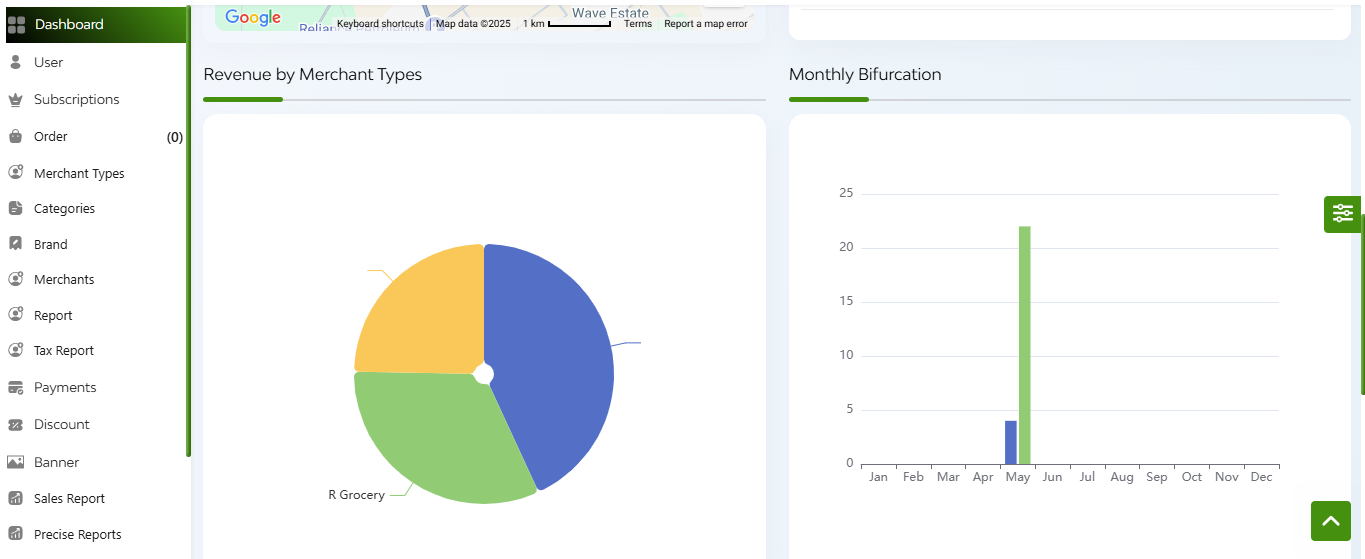
- Here you can see the revenue generated by various merchant types available and a bar graph which represents a monthly bifurcation on the basis of users and orders.
After that you can see the graphs regarding the cash and online revenue.
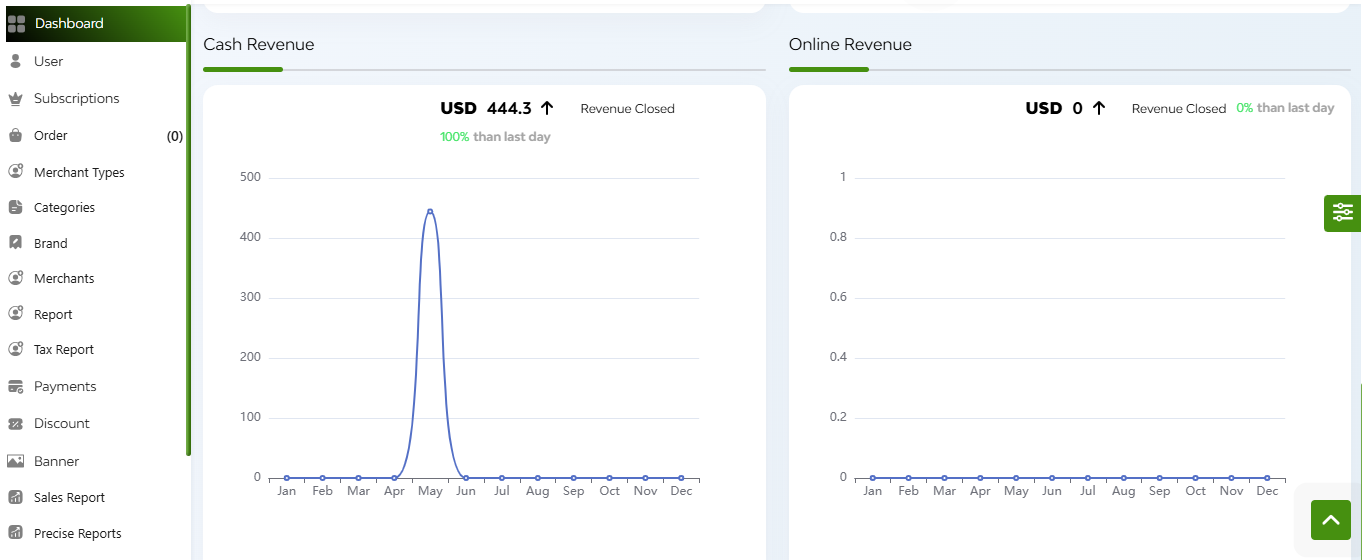
Here you can see the:
- Cash and online revenue trends over days and hours within a month
- Total income comparisons between the current and previous months


